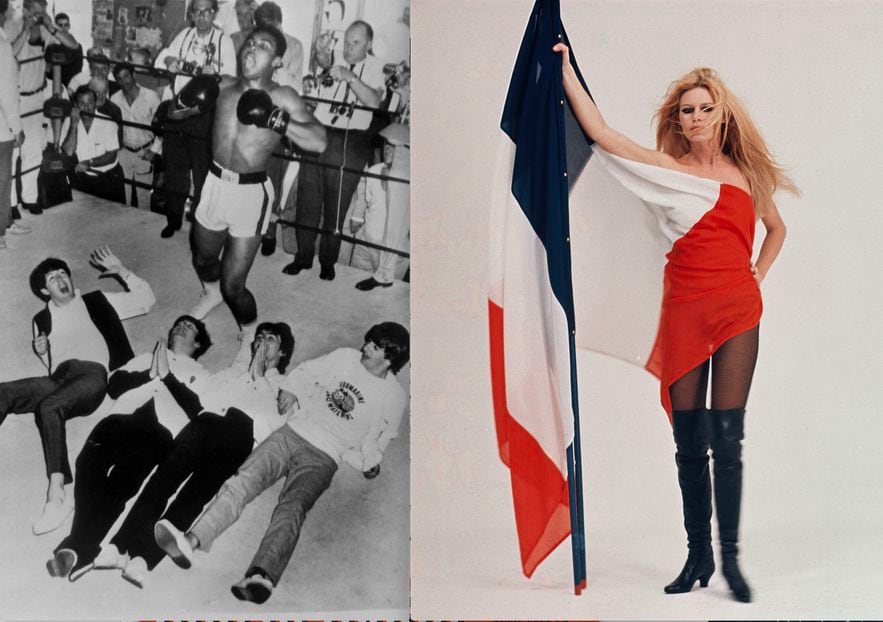What connects Christ to Che, Joan of Arc to Marilyn Monroe, Napoleon to Diego Maradona…? Their iconic status, responds the Image Museum of Epinal (Vosges), which has looked at the mutations over the centuries of these fantasized images. The curators François Cheval and Christelle Rochette have thus brought together on the walls representations of men and women, whose destiny, supposedly extraordinary, has become a lasting part of the collective imagination. “The reality doesn’t matter. The icon is a fictional creation, a fabricated image,” they point out.
It’s been ages since the term – from the Greek eikôn (image) -, which originally designates a figure venerated by the Orthodox Church, has passed from the religious sphere to the secular world. To the point of merging with its opposite: the idol, intangible and therefore unrepresentable. This did not prevent Christians from transgressing the biblical prohibition by constructing from scratch a vast Christ iconography; after the painful crucifixion in the Renaissance, room for the peaceful representation of a benevolent figure conferred by the Roman Church.
Stalin, France-USSR, December 1949. On the right. : Che Guevara, “Der Spiegel”, September 16, 1996.
/ © Nicéphore-Niépce museum, Chalon-sur-Saône / S. Jouanny © Coll. private /DR
From the 19th century, a whole “national novel” was developed under the pens of historians, like Michelet. The great historical figures, heroized endlessly, such as Vercingétorix, Henri IV, Louis XIV or Napoleon, invade school textbooks to become iconic in a France of exacerbated patriotism. Later, the iconography of Marshal Pétain “victor of Verdun” flooded the public space: from the fall of 1940 to the winter of 1941, representations of the father of the country, the country’s sole potential savior, bordered on the sacred .
“Universal myths have been lost in the desecrated images that fall by the millions on our screens”
With the rise of photography and cinema, iconization goes beyond artistic representation or oral history to become anchored in sound and mechanical image. Stalin, who places himself on stage in place of ancient orthodox icons, uses them without moderation to nourish his own myth, fueling what will later be called the cult of personality. Che Guevara, for his part, rises to the top with the single photo of Alberto Korda, that of the most widely distributed “hero” in the world, which immediately sees the “revolutionary martyr” identified with Christ deposed from the Cross.
During the 1950s and 1960s, Marilyn Monroe and Brigitte Bardot achieved the title of absolute icons; the first, bearer of a destiny as intense as it is tragic, giving herself entirely to the demands of Hollywood; the second suffering this cumbersome status and ending up damaging it. But their images from a bygone era continue to cross borders and inspire artists. Like those of the Beatles, who remain to this day the biggest record sellers on the planet: “We are more popular than Jesus Christ”, marveled John Lennon in 1966, in a quote considered megalomaniac, but diverted from its context since the idol comments at that time on the decline of Christianity across the Channel. As for the gods of the stadium, Mohamed Ali, Ayrton Senna and Diego Maradona, they embody the fight against racial segregation or glory then the descent into hell.

Mohamed Ali and the Beatles in 1964. Right. : Sam Lévin, “Brigitte Bardot, 1967”.
/ © Coll. private / DR © Ministry of Culture. Heritage and Photography Media Library. Dist. RMN – Grand Palais / Sam Lévin
The entry into the 3rd millennium and digital technology have radically changed the situation. Once recorded over time, universal myths have been lost in the rain of desecrated images which fall by the millions on our screens. How can we build a common myth in a Western society which sees ephemeral stars succeeding lightning influencers and only attracting the fervor of fragmented socio-cultural groups?
“Icons, fantasy images”at the Image Museum, in Epinal (Vosges), until September 22.